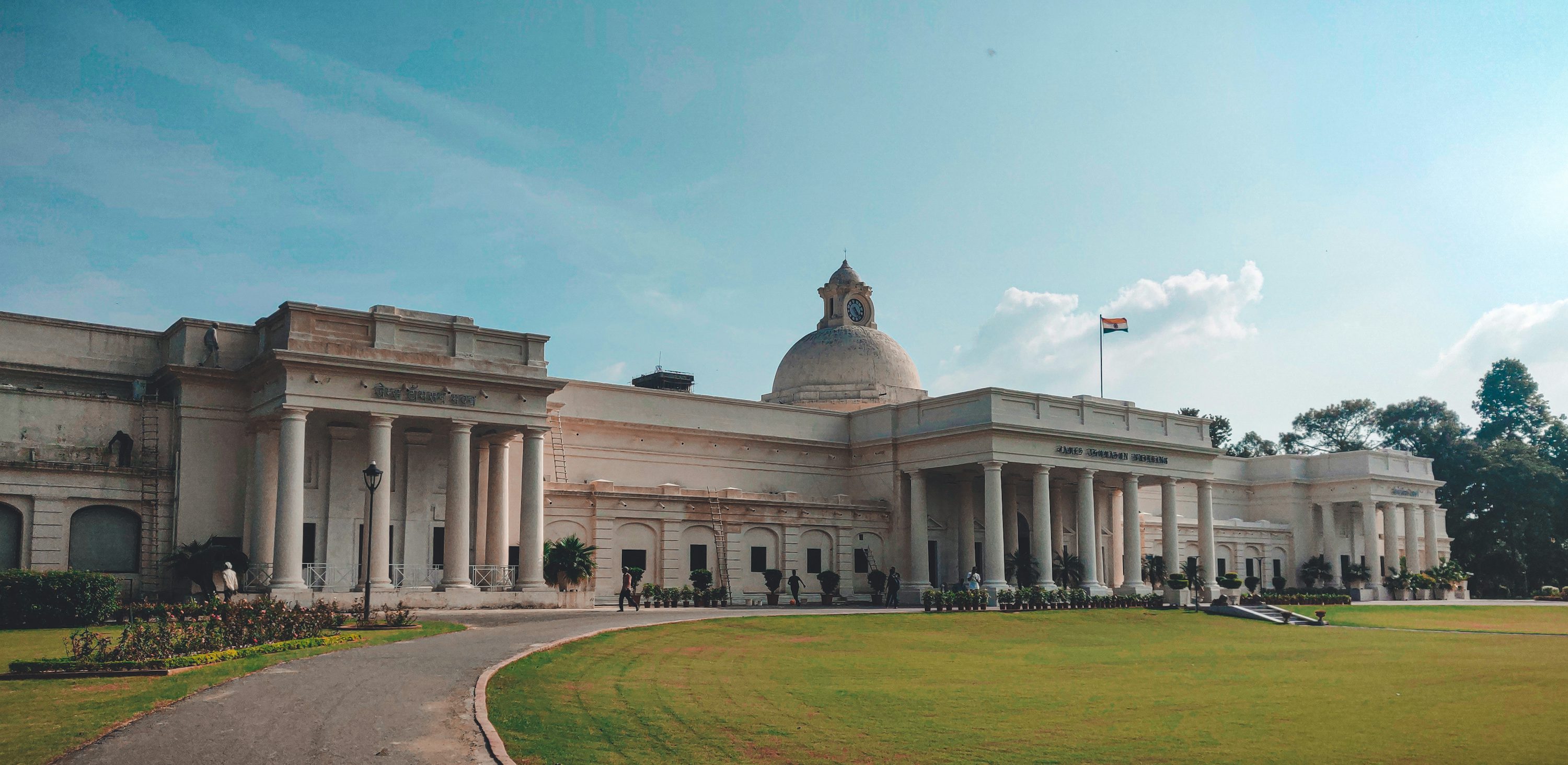

Body of IITR
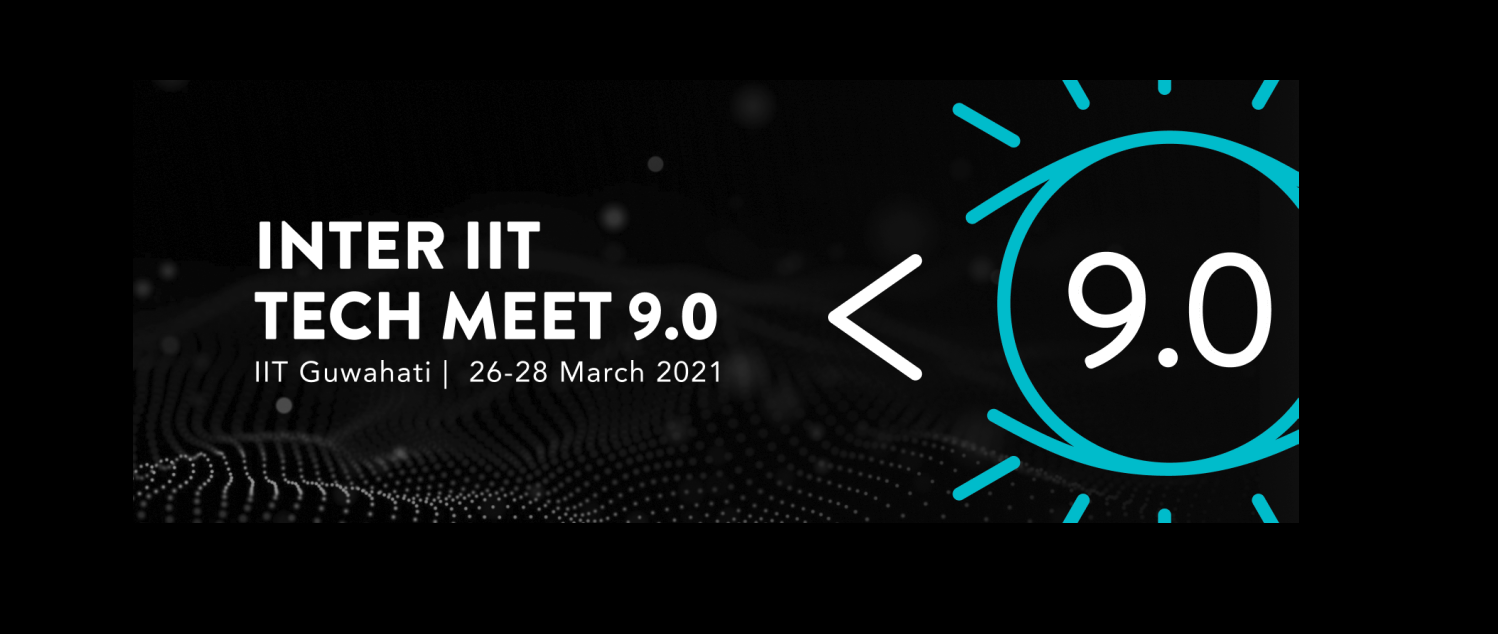
In this article, we interview the participants about their expectations and the approaches taken by them to solve the given problem statement.
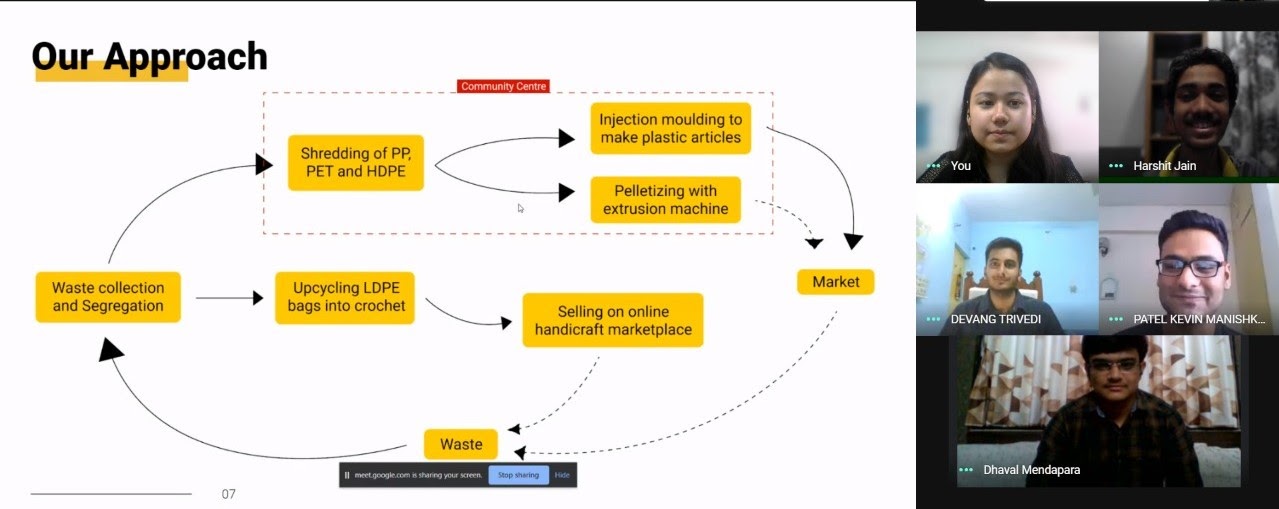
Could you give us a brief explanation about the event that you are participating in and your project proposal regarding the same?
We are participating in “Drishtee’s Tech-led innovation for rural entrepreneurs”. The problem statement demands for tech-based solutions that upskill the rural youth, optimize existing supply chains in a profitable and sustainable manner.
Our Project Scrapp proposes a decentralised model for the plastic recycling supply chain. We have developed an indigenous technological solution to shrink the supply chain to one decentralized entity of small scale waste collection and processing.
Why did you choose the above mentioned approach and what do you think makes this unique?
The plastic recycling market in India is largely run by about 1.5 - 4 million ragpickers . Despite their important role in society, the plight of these frontline warriors is despairing. From no job security to extremely unhygienic working conditions, ragpickers in India continue to be exploited by the upper members of the plastic supply chain. We realised that by decentralizing the existing supply chain through technology, we can re-establish a new and fair equilibrium. What makes us unique is our vision to make these ragpickers grassroot entrepreneurs.We do not wish to employ them but to empower them through technology.
What is the major goal of this project and what do you expect to achieve with this?
The major goal of the project is to set up an efficient, sustainable and profitable plastic supply chain and in the process, make the ragpickers grassroot entrepreneurs.
What were the major challenges faced by your team during the working of this project?
The major challenge in working with a community that has been discriminated against and exploited for so long was to build trust. In every social-entrepreneurship project, community building is always the hardest step. Along with this, there was a lot of resistance from the bigger waste aggregators.
What difference do you think the event being online this time around would make to the level of competition. Do you expect other teams to be slightly underprepared because of the covid pandemic?
I personally think that it would not make a lot of difference in the presentation prospect, but definitely synchronised team work is difficult to achieve virtually.
Finally, What are your expectations from your team for the competition?
I expect us to give our best.
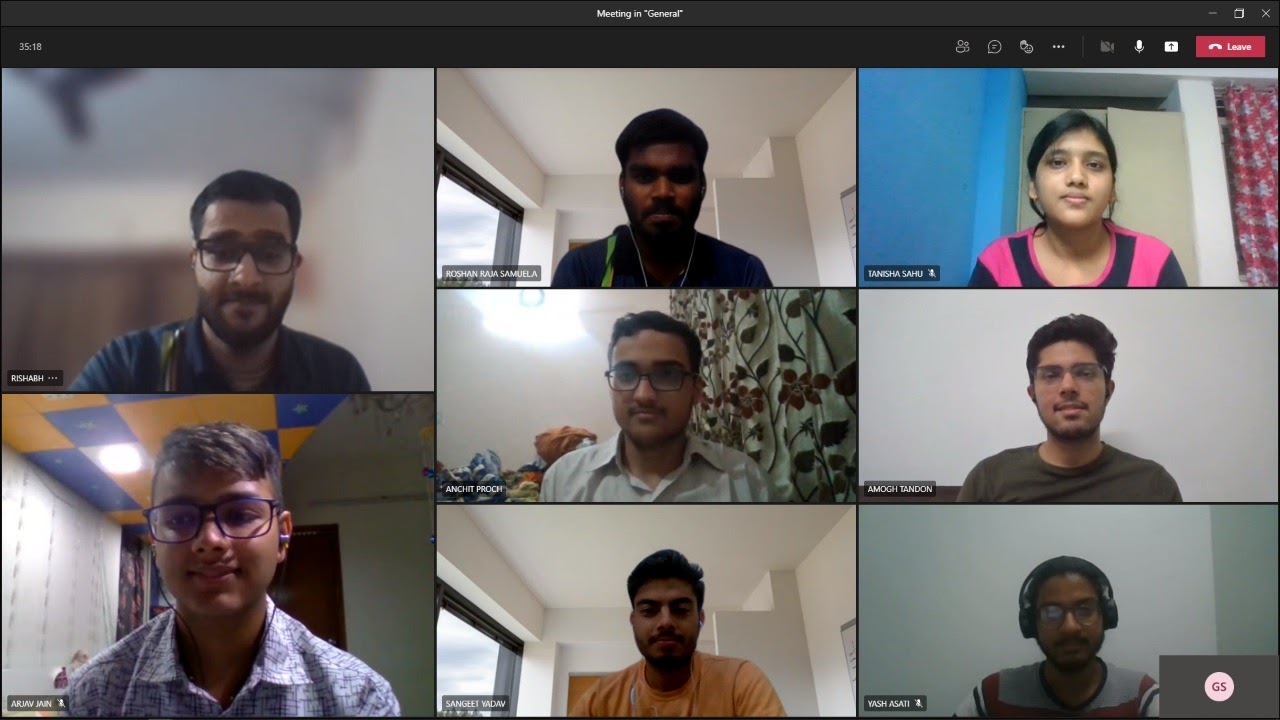
Could you give us a brief explanation about the event that you are participating in and your project proposal regarding the same?
Our team is participating in Bosch’s Electric Vehicle Simulation Challenge. It is a Mid Prep Event, so we got 2 weeks to design and model an EV on Simulink in two weeks. We have decided to design an Ultra-light Commercial Vehicle (ULCV) given the fact that early adoption of EVs in India is coming from Businesses and, also, the rise in the demand for small transportation solutions for metro cities in the recent time.
What is the major goal of this project and what do you expect to achieve with this?
I think the organizers wanted to familiarize the participants with the design considerations and integrated modules critical to the development of an electric vehicle. It also placed special emphasis on the design of a motor and inverter for the event. To put it succinctly, the project aimed at optimizing electric vehicles for the Indian use case scenarios.
What were the major challenges faced by your team during the working of this project?
Usually, while modeling an electric vehicle, we are expected to use a commercially available Motor & Motor Controller but for this competition, we had to design our own motor controller which by far has been the most challenging task for our team.
What difference do you think the event being online this time around would make to the level of competition. Do you expect other teams to be slightly underprepared because of the covid pandemic?
Honestly, had this competition taken place a year ago, the level of competition would have been worse. But a year in the pandemic, most of the students from all colleges are comfortable participating in online events from their homes. And, it’s a competition based on mathematical modeling automotive subsystems which can be easily done remotely.
This being said had the event been offline we could actually implement our design and mathematical models practically. However, the online mode of the competition has its own advantages as the students can work in a more comfortable ambiance.
Finally, What are your expectations from your team for the competition?
Exposure to the diverse approaches used by other teams in the design of EVs shall be a great learning experience for us. However, it would be difficult to predict what other teams are actually capable of from their performance in the online event. Also, we will be able to receive reviews and advice from judges who have actually worked in the EV industry.
Could you give us a brief explanation about the event that you are participating in and your project proposal regarding the same?
Our team is participating in the DRDO’s Vision based obstacle avoidance drone which is a mid prep event. The task was to design an autonomous drone that navigates in a complex static environment by avoiding any collision with the on-field obstacles and reaching the target destination after its correct detection. We have used an algorithm which makes the drone travel in a zigzag path. It also allows the drone to dynamically change its height.
Why did you choose the above mentioned approach and what do you think makes this unique?
We found the above mentioned approach working most effectively with sensors provided in the drone and their constraints. Our algo has a real time obstacle detection feature along with dynamically varying height which makes it very effective in environments with a lot of random obstacles.
What is the major goal of this project and what do you expect to achieve with this?
Recent flash floods in Uttarakhand and similar disasters in the recent past have thrown difficult challenges to search & rescue parties. Inaccessible areas, narrow valleys, tunnels, and large swaths of affected areas have tested human capabilities in terms of perseverance and speed. The ability to sense objects in real-time and avoid imminent collisions is the basic requirement of autonomous drone operations in such environments.
What were the major challenges faced by your team during the working of this project?
The challenges faced by our team were:
What difference do you think the event being online this time around would make to the level of competition. Do you expect other teams to be slightly underprepared because of the covid pandemic?
The teams whose colleges have been reopened definitely had an extra advantage over us, since they would have had better coordination with each other. The rest of the teams will have almost the same amount of preparation as us. But compared to previous years, most of the teams would be under prepared due to the unfavorable conditions brought up by the Covid Pandemic.
Could you give us a brief explanation about the event that you are participating in and your project proposal regarding the same?
We are participating in an event called the Agrobot Innovation challenge. The challenge is to make a bot that can solve most of the problems faced in the agricultural sector, specifically farming in hilly terrain, transplanting, weed removal and sowing of irregular seeds. Our project aims to solve each one of them, we have implemented a rocker-bogie chassis to overcome hilly terrain , cranck rocker mechanism for transplanter, delta mechanism for weed removal and tried to modify the existing seed metering solution based upon our own specification. We also tried to implement image processing for weed detection and tried to implement motion planning with the use of depth-sensing cameras.
Why did you choose the above-mentioned approach and what do you think makes this unique?
Our approach of traversing rough terrain is inspired by the mars rover that uses similar sets of drive trains. Along with that as this is a design competition we couldn’t possibly manufacture and test our simulation. So for all the mechanisms, we have tried to implement the pre-existing methods used in this sector and tried to modify them for our specifications.
What is the major goal of this project and what do you expect to achieve with this?
Our main goal from this project is to optimise the production capacity for the small and marginalised farmers, while trying to keep the cost down in order to make it more accessible. We can further improve this design to make it a market-ready product.
What were the major challenges faced by your team during the working of this project?
The major challenge was surely the sharing of files. Solidworks files tend to have sizes upwards of 130MB-140MB. The other problem was communication, although we tried to stay online on discord for the majority of the time, but it was definitely hard to brainstorm and discuss the idea in online mode.
What difference do you think the event being online this time around would make to the level of competition. Do you expect other teams to be slightly underprepared because of the covid pandemic?
Well, actually there are two sides to this problem. The first is that working in online mode is definitely hard and it takes some time and effort to get used to, So most of the teams might be underprepared in that way. But I feel this year’s competition might have just increased because many tech groups of different IITs might consider to participate this year as their flagship might have been cancelled.
Finally, What are your expectations from your team for the competition? We expect to perform well in this year’s competition mainly due to the fact that we have tried giving our best and also are really comfortable with our design and simulation. As for my team, I am really thankful to each one of them, we spent loads of sleepless nights together so really hoping to get some good news at the end of this month.
Could you give us a brief explanation about the event that you are participating in and your project proposal regarding the same?
We are participating in the Mid-prep event of developing ISRO’s web-based Visualisation tool for AstroSat observations. We developed a web application to visualise a general catalog of Astronomical objects (x-ray binaries in particular) and highlighted those which are observed by AstroSat. Additionally, as required, we presented an astrophysical data analysis and results of Astronomical data.
Why did you choose the above mentioned approach and what do you think makes this unique?
Our webapp is quite Intuitive to use and adding new Astronomical objects in the database requires minimal modifications. Also all available details of each observed celestial source can be compiled into a PDF document too for download with this web based tool, we named this “CosmoScope”.
What is the major goal of this project and what do you expect to achieve with this?
The goal was primarily to achieve the required specifications and features, additionally we tried our best to bring it out in a more user friendly way.
What were the major challenges faced by your team during the working of this project?
Making the web-app interactive with features like spanning and zooming the whole sky and cleaning the provided data presented some challenges. Apart from these, searching for adequate and appropriate data for analysis was tough, but we managed to get past these challenges and presented our best solution.
What difference do you think the event being online this time around would make to the level of competition . Do you expect other teams to be slightly underprepared because of the covid pandemic?
We got to prepare for this event only a week before the deadlines as most things are now shifted to online mode, the days were hectic as we had to manage this along with our classes. We only focused on giving our best in the timeframe.
Finally, What are your expectations from your team for the competition?
The team has given their best, I cannot thank them enough.
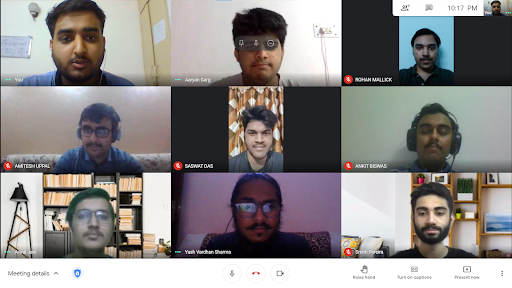
Could you give us a brief explanation about the event that you are participating in and your project proposal regarding the same?
We are participating in a high-prep event called the BOSCH Traffic Sign Recognition Challenge. In this event, we have to create a software package that gives the user the freedom to augment and transform the data, then train a model on the data and finally analyze the results by visualizing various metrics. We started with the current state-of-the-art techniques for approaching this problem and then customized it to our needs.
Why did you choose the above-mentioned approach and what do you think makes this unique?
We chose the current state of the art because it can ensure the best performance for this problem. We also customized it to make it efficient and less resource-intensive. Apart from the deep learning part of the problem, we have focussed on the design, user-friendliness, and optimization of the software. This makes our approach unique.
What is the major goal of this project and what do you expect to achieve with this?
The world around us is transforming, and every appliance we use is becoming smart. In this age deep learning is booming, and autonomous vehicles are closer to reality than ever. Predicting traffic signs accurately and with certainty is something that an autonomous vehicle should do. Thus, we wish to solve this challenge that can contribute to helping an autonomous vehicle make decisions by itself.
What were the major challenges faced by your team during the working of this project?
This challenge required us to integrate software development and deep learning, which is a challenging task in itself. As the time was limited, we had to work at a very fast pace and had to efficiently manage our workflow so that we didn’t encounter any bottleneck during the development of our software. After the software was complete, we had to run various experiments on it in order to ensure that our model was good at this task.
What difference do you think the event being online this time around would make to the level of competition. Do you expect other teams to be slightly underprepared because of the covid pandemic?
The covid pandemic certainly had an impact on the event as it was difficult to communicate and approach our teams. However, we don’t expect the level of the competition to change because of it. We believe that all the other teams have worked equally hard and given their best to this challenge. We are looking forward to healthy competition at this event.
Finally, What are your expectations from your team for the competition?
Through the dedicated efforts of our team, we have developed a working software and a good benchmark. Everyone has given their best in their field of expertise and contributed equally towards this challenge. We have confidence in our approach and the software we have developed and expect it to perform well.
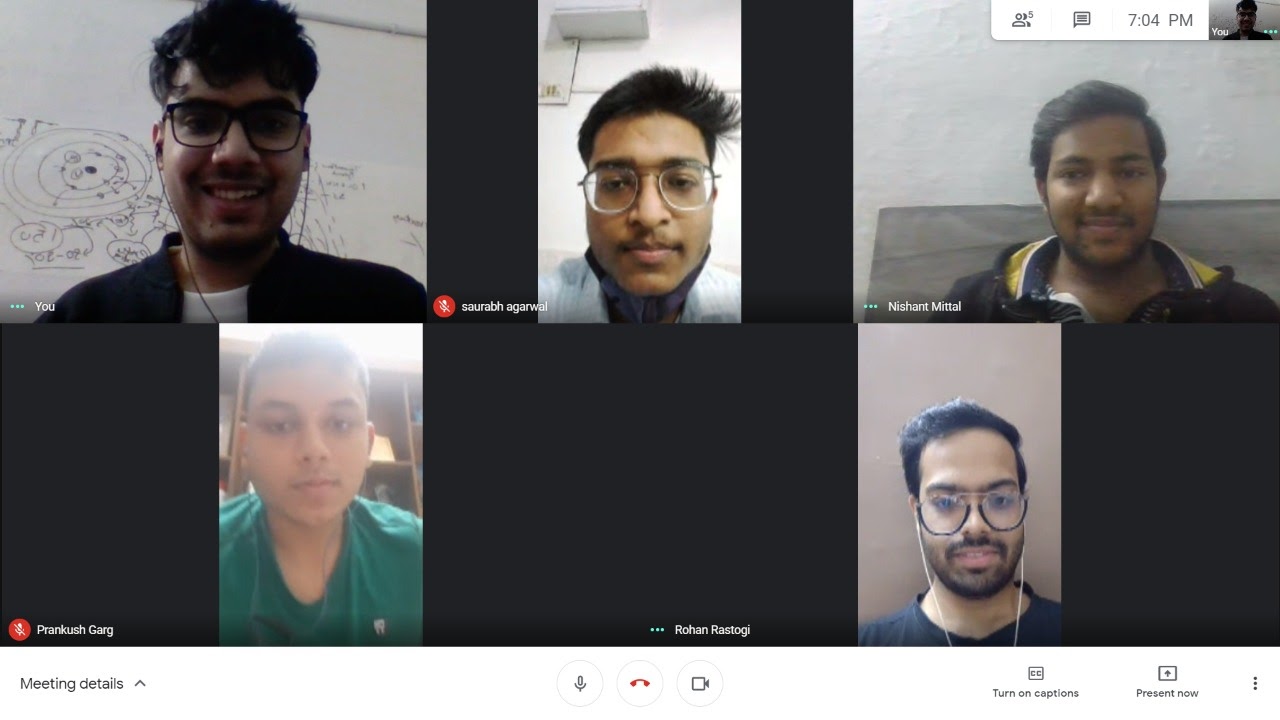
Could you give us a brief explanation about the event that you are participating in and your project proposal regarding the same?
Quantinsti Algo Trading challenge is a really simple trading competition. Every team has to prepare their strategy which will execute trades in the market for 5 days. The strategy which will give the most stable returns will be considered as the winner. We have focused on developing a momentum + mean reversion strategy which tends to cover all aspects of the market. However looking at the situation at the end of each day we tried to change the strategy based on current market sentiments.
Why did you choose the above-mentioned approach and what do you think makes this unique?
We tend to react according to the market situation rather than sticking to one approach. SnP 500 is currently not following any textbook trend which makes it difficult for us to use something really systematic. So rebalancing the strategy becomes really important.
What is the major goal of this project and what do you expect to achieve with this?
High and stable market returns
What were the major challenges faced by your team during the working of this project?
Blueshift platform is really bad and it’s a major challenge every team is facing. It readjust high scores at the end of day and shows frequent error in placing orders.
What difference do you think the event being online this time around would make to the level of competition. Do you expect other teams to be slightly underprepared because of the covid pandemic?
Absolutely no difference, every participant is well aware of financial markets and is well prepared.
Finally, What are your expectations from your team for the competition?
Gold Medal, Of Course.
Could you give us a brief explanation about the event that you are participating in and your project proposal regarding the same?
The name of our problem statement is “BRIDGE 2 ‘S AUTOMATED HEADLINE AND SENTIMENT GENERATOR” which includes
All these tasks can be accomplished by Machine Learning or Deep Learning Natural Language Processing models and we went for the same with improvisations of our own specific to the tasks.
Why did you choose the above mentioned approach and what do you think makes this unique?
Today Machine Learning or Artificial Intelligence is being used in corporates and has been a reason behind the success of a number of big brands eg. Spotify because of the recommendation system. Since the data provided to us (tweets and articles) was raw (inot preprocessed) it contained a lot of problems (spelling errors, both english and hindi in single sentence). There were a number of such problems, hence it was not possible to deal with all of them separately. But all these cases can be carefully handled with Deep Learning approaches without a lot of feature engineering. The uniqueness in this approach is that today most corporate applications that use AI in some form mostly use Machine Learning approaches and not Deep Learning because it is unpredictable despite having higher accuracy than Machine Learning models.
What is the major goal of this project and what do you expect to achieve with this?
Major goal of our team from this project is to Learn and Explore more about Deep Learning and to work on applications that are actually developed from real life raw data not artificially synthesized data. We wanted to see how this era of Big Data (millions of tweets, articles, posts posted every day on various social media platforms) can be leveraged to build useful applications like the one in this problem statement.
What were the major challenges faced by your team during the working of this project?
There were many major challenges we faced in this problem statement especially in a few subtasks related to sentiment extraction from articles and tweets. We found no proper academic paper that solved our problem so we had to combine approaches from different papers for our problem statement. Also there were a lot of problems with data not being labelled (given to us was just a set of articles and tweets with no labels indicating which brand had which sentiment in articles or tweets) so we had to synthesize our own data by scraping tweets corresponding to different mobile brands using twitter API.
What difference do you think the event being online this time around would make to the level of competition . Do you expect other teams to be slightly underprepared because of the covid pandemic?
Yes, I think teams might be slightly underprepared due to the event being held online. Online meetings can never replace people brainstorming together in the same room. Also I feel time given was not adequate because one cannot innovate in a field in a matter of 10 days (until you have very ample experience in problem statement).
Finally, What are your expectations from your team for the competition?
We expect a lot from our submissions as we put in a lot of effort in each subtask and devoted all ten days to this problem. Although there were 10 members in our team but our division of tasks, communication was good and we were able to submit good results for this problem.
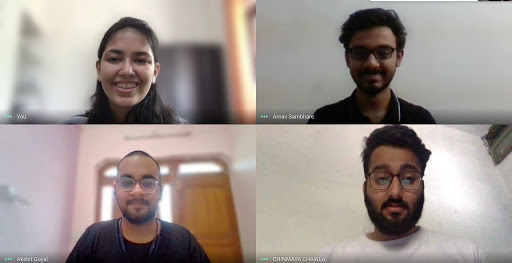
Could you give us a brief explanation about the event that you are participating in and your project proposal regarding the same?
We are participating in the case study competition by The Product Folks. The problem statement demands we help automate the process of payout for a client called Kaching. We are approaching the problem by reinventing the entire user journey to make it more efficient instead of just targeting the isolated pain point.
Why did you choose the above mentioned approach and what do you think makes this unique?
We chose the above approach because we felt that it would be the most efficient way to go forward in terms of cost, implementation, and usability
What is the major goal of this project and what do you expect to achieve with this?
The major goal of this project is to help Kaching automate it’s payout process… we hope to be able to help kaching become a seamless and widely adopted product.
What were the major challenges faced by your team during the working of this project?
The fact that we had only 3 days to complete this project all that all three of these were weekdays was a little challenging. Two of us were also travelling which made it very difficult to sit down together as a team frequently
What difference do you think the event being online this time around would make to the level of competition . Do you expect other teams to be slightly underprepared because of the covid pandemic?
We feel that collaboration becomes a little difficult when you have to do it online. Apart from that not that much of a difference, tbh.
Finally, What are your expectations from your team for the competition?
We’re keeping our fingers crossed and hoping for the best. It was a great learning journey, we had a lot of fun and we have no regrets.
Could you give us a brief explanation about the event that you are participating in and your project proposal regarding the same?
The event “SAPTANG LAB’S NETWORK SECURITY HACKATHON” revolves around the task of developing Proof-Of-Concept (PoC) exploits for real world, known vulnerabilities (which have already been reported). Proof-Of-Concept means that we have to write a small payload (specially crafted input ), which is used by an exploit script to trigger the vulnerability. We basically had to simulate the environment in which these vulnerabilities exist and then reproduce these vulnerabilities in these environments. We were given “CVE” numbers which are used to uniquely identify these vulnerabilities and had to submit a small report regarding the vulnerability along with our PoC code and a video demonstrating the same.
Could you tell us a bit about your approach with these challenges?
Since the vulnerabilities were already known, our first step was to find the official public advisory regarding the vulnerability, to identify which types of software, and the corresponding version they affected.
We could also see if any patches regarding the same were provided. Since these patches are generally small, it is a good idea to look at them to find out where exactly the vulnerability exists in their code base. One could also try to speculate what kind of payload was causing the vulnerability by looking at the checks implemented in the patch.
After that, we had to set up a test environment. Here again the operating systems or software version being affected helps, as we can create virtual machines or docker containers for these particular versions. In some cases the vulnerabilities were already patched in the software distribution, so we had to build them from source at the point when the vulnerability did exist in the codebase.
Lastly, the actual exploit development consists of trying to figure out (using the patch or other publicly known information or even via reading source) of what the vulnerability is, crafting payloads for it , debugging them, and so on. This basically includes a large amount of testing and some trial and error.
What were the major challenges faced by your team during the working of this project?
The major challenges faced by us include:
What difference do you think the event being online this time around would make to the level of competition. Do you expect other teams to be slightly underprepared because of the covid pandemic?
This event wouldn’t differ much even if it were held offline. The level of competition would probably be the same. We guess all teams are kind of underprepared because of the pandemic since the most real-time collaboration one could get is screen sharing on a video call, which is ok, but not better than in-person teamwork.
Finally, What are your expectations from your team for the competition?
In the end, our team did manage to write PoCs for all the challenges. We guess that some other teams might also have solved all the challenges and in the end, it might come down to whose report or PoC script were better. We gave it our best, and since our members are from the Team InfoSecIITR, one of the best CTF teams in the country, we do expect good results and are very optimistic about the results.